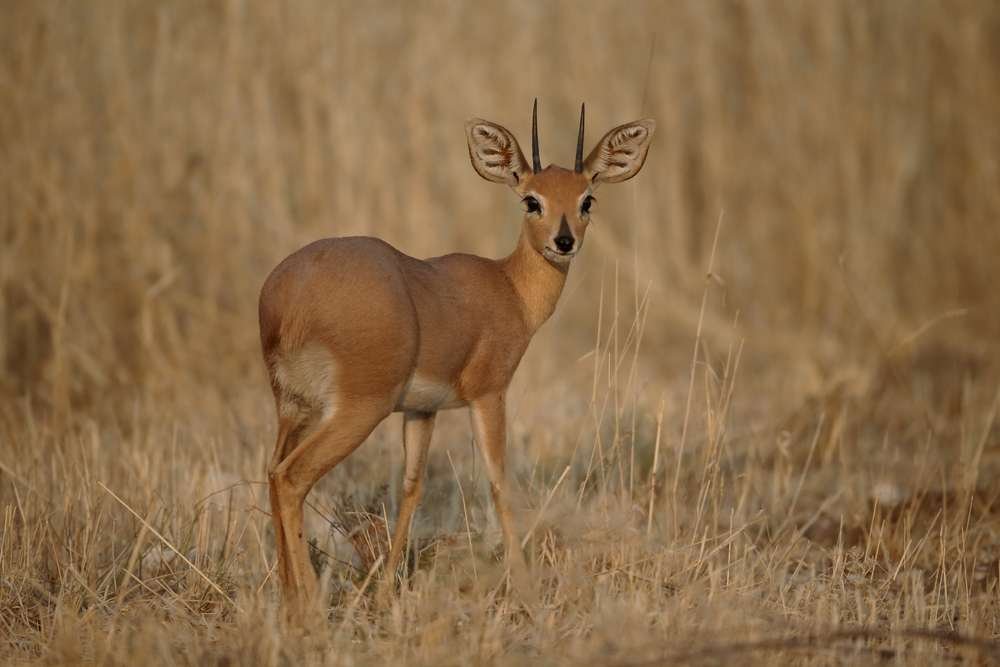Southern Steinbuck
( steenbok or steinbok )
- Raphicerus campestris campestris
- IUCN Status: Not Evaluated
- Trend: decreasing

- Kingdom: Animalia
- Phylum: Chordata
- Class: Mammalia
- Order: Artiodactyla
- Family: Bovidae
- Subfamily: Antilopinae
- Genus: Raphicerus
Share:
General Information
The Southern Steinbuck is a small antelope and one of two main subspecies of steinbuck, namely, from southern Africa and East Africa.
Fun Facts!
Description
- Shoulder height: 45–60 cm
- Weight: 12 kg
- Lifespan: 7 years or more
Ecology and Behaviour
Steenbok are active during the day and the night though they rest under shade on particulary hot days. While resting, they may be busy grooming, ruminating or taking brief spells of sleep. They cannot reach above a meter when browsing for food so their diet consists of low-level vegetation, fruits, tubers, roots, forbs and shrubs. They are almost entirely independent of drinking water, gaining the moisture they need from their food.
At the first sign of trouble, steenbok typically lie low in the vegetation and If a predator or perceived threat comes closer, a steenbok will leap away and follow a zigzag route to try to shake off the pursuer. Escaping steenbok frequently stop to look back, and flight is alternated with prostration during extended pursuit. They are known to take refuge in the burrows of aardvarks. It often eludes it’s predators by darting down old burrows. Known predators include Southern African wildcat, caracal, jackals, leopard, martial eagle and pythons.
Conservation
It is listed on the IUCN red list as “Least Concern”
Distribution and Habitat
Steenbok live in a variety of habitats from semi-desert to open woodland and thickets, including open plains, stony savannah, and Acacia–grassland mosaics. There are two distinct clusters in steenbok distribution. In East Africa, it occurs in central and southern Kenya and northern Tanzania. It was formerly widespread in Uganda, but is now almost certainly extinct there. In Southern Africa, it occurs in Angola, Namibia, South Africa, Eswatini, Botswana, Mozambique, Zambia, Zimbabwe and probably Lesotho.
Interaction with humans
No donation to this project yet.
| M | T | W | T | F | S | S |
|---|---|---|---|---|---|---|
| 1 | 2 | 3 | 4 | 5 | 6 | 7 |
| 8 | 9 | 10 | 11 | 12 | 13 | 14 |
| 15 | 16 | 17 | 18 | 19 | 20 | 21 |
| 22 | 23 | 24 | 25 | 26 | 27 | 28 |
| 29 | 30 | 31 | ||||


